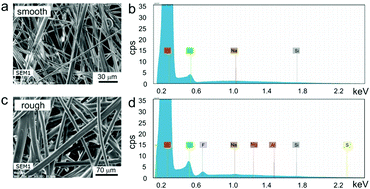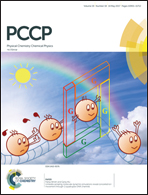Effect of fibrous separators on the performance of lithium–sulfur batteries†
Abstract
In this paper we systematically investigated effect of separator morphology on the performance of Li–S batteries. We tested two kinds of commercially available non-woven fibrous separators made of polypropylene in conjunction with trilayer PP/PE/PP porous separator. Among the non-woven separators, the fibers of the separator of first kind are rough and more acidic than the fibers of the separator of second art, which are smooth. It was found that batteries with smooth separator demonstrate higher Coulombic efficiency, higher charging/discharging capacity and better cycling stability. We attribute better performance of batteries with smooth fibers of separators to lower acidity than that of rough fibers. We believe that negatively charged polysulfides are unable to adsorb on more acidic rough fibers and diffuse readily to lithium electrode. In contrast, polysulfides are able to adsorb on the surface of less acidic smooth fibers that reduces their polysulfides shuttle and rapid decay of battery capacity. Strategic deployment of non-woven Freudenberg and Celgard separator in combination leads to high active mass utilization, superior wettability, reduced short circuit tendency caused by dendritic growth and slower capacity decay.



 Please wait while we load your content...
Please wait while we load your content...